The Elements of a Healthy Community wheel was designed and produced by Vitalyst Health Foundation in collaboration with community partners. The elements are inspired by the work of the World Health Organization and the Centers for Disease Control and Prevention.
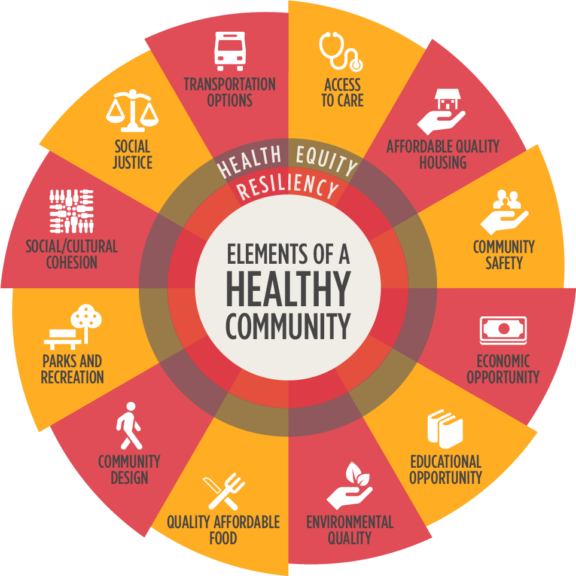
WHAT COMPRISES A HEALTHY COMMUNITY?
“A healthy community is one where people have the opportunity to make healthy choices, in environments that are safe, free from violence, and designed to promote health. Factors that influence health range from early childhood education to quality housing and jobs, and include many other areas of community development such as financial inclusion, access to health clinics and healthy food, sustainable energy, and transportation.”*
ACCESS TO HEALTH CARE AND COVERAGE
The Institute of Medicine defines this as “the timely use of personal health services to achieve the best health outcomes,” is informed and driven by:
- Arizonans gaining meaningful access to the right care, at the right place, at the right time. Efficiency, effectiveness, expertise, cost and patient experience all matter.
- Health insurance coverage – ranging from KidsCare (Arizona’s Children’s Health Insurance Program) and AHCCCS (Arizona’s Medicaid) to Employer-based insurance, the Health Insurance Marketplace and Medicare.
- Making progress toward the health care Triple Aim – improving care quality, lowering costs and improving population health.
HEALTH IMPACTS: DISEASE PREVENTION AND TREATMENT, PHYSICAL AND MENTAL HEALTH, ECONOMIC STABILITY
AFFORDABLE QUALITY HOUSING
Affordable quality housing is an investment in quality health. Research continues to show that affordable quality housing results in positive health outcomes. Affordable quality housing can improve community health in the following ways:
- Enables people to pay for basic needs that influence health
-
- Food, medical care, utilities.
-
- Quality housing protects people from exposure to contaminants, neurotoxins, and other dangers.
- Housing location and stability can increase consistent access to destinations that affect health.
- Housing stability and neighborhood conditions can decrease mental health problems.
HEALTH IMPACTS: ECONOMIC STABILITY, DISEASE PREVENTION, AIR QUALITY, MENTAL HEALTH, EARLY BRAIN DEVELOPMENT, INJURY PREVENTION, EXPOSURE TO EXTREME CLIMATE, EXPOSURE TO LEAD
COMMUNITY SAFETY
Creating a safe community means creating a healthy community. For instance, unsafe roads, bikeways, and walkways may limit access to destinations of health and result in negative health outcomes. Studies show that fear of crime resulting from unsafe conditions like broken sidewalks, poor lighting, graffiti, and boarded up buildings was associated with poor mental health, reduced physical activity and lower quality of life. Violence and violent crime have been correlated with asthma, higher rates of chronic illness like heart disease, and overall unhealthy communities. Ensuring communities are safe will help ensure that communities are healthy.
- Socially-connected communities, free of crime and violence
- Designed to encourage social interaction
- Policies and practices that are inclusive of all community members
HEALTH IMPACTS: MENTAL HEALTH, INJURY PREVENTION, PHYSICAL ACTIVITY
QUALITY AFFORDABLE FOOD
Food access starts with the simple notion that “we are what we eat,” and a recognition that availability of healthy, affordable, quality food the foundation for a community’s ability to be healthy.
This access to healthy food is determined by various factors that make up the community food system. These factors include the growing, harvesting, processing, packaging, transporting, selling, eating, recycling and composting of food products.
Ensuring that these food systems can produce good food depends on:
- Advancing policy – developing and re-aligning “federal, state and local agriculture and food policies [to] protect the public’s health and the environment by supporting a healthy, equitable, and sustainable food system.”
- Cultivating food-aware communities – “developing relationships to improve food environments, increase access to healthy food, and inform food and nutrition policy.”
- Ensuring sustainability – directing resources and strategies toward long-term food security in the face of a convergence of issues that threaten the availability of healthy food.
HEALTH IMPACTS: NUTRITION, OBESITY, DISEASE PREVENTION, MENTAL HEALTH, EARLY BRAIN DEVELOPMENT
HEALTHY COMMUNITY DESIGN
The design of the built environment directly influences the health of our communities. For instance, people who live in more walkable cities are less overweight and are more physically active.
Unfortunately, the design of many of our cities has introduced considerable consequences for our community health by limiting our access to transportation, food, health care, and recreation while decreasing our water and air quality and social capital.
Moving forward, governing policies and codes will play an important role in creating healthy community design. Sadly, studies show that local government regulations have discouraged developers to invest in design projects that could prevent these undesirable outcomes. Questions regarding how and where in community development will guide the conversation and action around improving healthy community design.
- Mixed-use development
- Equitable transit-oriented development
- Environments free of excessive noise
- Vacant land and adaptive reuse opportunities
- Access to cool and shaded spaces
- Access to green and open spaces, including healthy tree canopy and agricultural land
HEALTH IMPACTS: ECONOMIC STABILITY, MENTAL HEALTH, PHYSICAL ACTIVITY, AIR QUALITY, INJURY PREVENTION, OBESITY, HEAT-RELATED ILLNESS
PARKS AND RECREATIONAL OPPORTUNITIES
Community parks and places of recreation account for community well being in three major ways:
Personal Health Benefits:
- Increase rates of physical activity.
- Leads to reductions in stress, lower blood pressure, lower body mass index, and increase in overall health.
- Environmental Benefits
- Green spaces provide ecological services like pollution abetment, urban cooling, and storm water runoff mitigation.
- Social Benefits
- Research indicates that green spaces can strengthen social ties by providing spaces for art, athletics, and events.
- Decrease crime rates.
HEALTH IMPACTS: PHYSICAL ACTIVITY, DISEASE PREVENTION, MENTAL HEALTH, EARLY BRAIN DEVELOPMENT, AIR QUALITY
ECONOMIC OPPORTUNITY
Economic opportunity refers to the outlook for upward social mobility, and impacts opportunities for health. Employment is a key factor in economic opportunity and is often the main source of income that provides a family with food, childcare, educational opportunity, and medical care.
Employment opportunity can improve stability and employment benefits that result in better health. Unemployed are 54% more likely to have fair or poor health and is linked to loss of health insurance, increased blood pressure, and depression. These health outcomes resulting from poor economic opportunity reveal that increasing economic opportunities in communities is critical to their overall health.
- Access to capital for entrepreneurship
- Access to affordable and diverse commercial spaces
- Job training and mentorship/accelerator space
- Local talent development
- Clustering of commerce and integration with residential use
- Living wages
- Access to internet
HEALTH IMPACTS: ECONOMIC STABILITY/ACCESS, AIR QUALITY, WALKABILITY/PHYSICAL ACTIVITY, MENTAL HEALTH
EDUCATIONAL OPPORTUNITY
Education empowers and equips individuals and communities for successful and healthy lives. Increased education often leads to better working conditions, health insurance, wages, and access to resources that promote better health outcomes.
Individuals with more education live longer, healthier lives than those with less education. College educated people are likely to live nine years longer than non high school educated counterparts and better-educated individuals are less likely to have chronic illness like heart disease or diabetes.
- Opportunities for high quality and accessible education
- Investment in behavioral, mental, emotional support
- Opportunities for developmentally-appropriate and affordable childcare
- Access to a variety of post-secondary opportunities
HEALTH IMPACTS: GREATER EDUCATIONAL ACHIEVEMENT, ECONOMIC STABILITY, FOOD ACCESS
ENVIRONMENTAL QUALITY
Community health is housed and influenced by the natural and built environment. Factors including air quality, waste disposal, land use, water quality, species protection, and plant ecology contribute to the overall environmental quality of our communities. Poor environmental quality can lead to a myriad of health issues like cardiovascular disease, cancer, chronic illness, poisonings, and water related diseases among many other outcomes. In order to improve environmental quality, changes in policy, development practices, transportation options, waste reduction, and energy use can be made. By ensuring the environments we live in are healthy, we can ensure that our communities are healthy as well.
- Clean air and waterways
- Healthy and clean soil
- Water supply protection and water security
- Tobacco- and smoke-free spaces
- Minimized toxins, greenhouse gas emissions and waste
- Affordable and sustainable energy use
HEALTH IMPACTS: DISEASE PREVENTION, EARLY BRAIN DEVELOPMENT, ASTHMA AND OTHER RESPIRATORY DISEASES, EXPOSURE TO ENVIRONMENTAL CONTAMINANTS INCLUDING LEAD
SOCIAL AND CULTURAL COHESION
Social cohesion is commonly referred to as the glue that holds society together. It is the “trusting network of relationships and shared values and norms of residents in a neighborhood” that allow members to achieve shared well-being. Cohesive societies are built on communities that protect people against risk, foster trust, and ultimately promote community health. Studies show that community social cohesion can help improve family health, safety, and overall well-being while decreasing stress poverty, and even racism. Alternatively, poor social cohesion leads to poor childhood development, higher rates of chronic disease, and increased rates of mental health.
- Robust social and civic engagement
- Supportive relationships, families, homes, pets and neighborhoods
- Support for mental health
- Opportunities for engagement with arts, music and culture
- Community empowerment that can lead to systems change
HEALTH IMPACTS: ECONOMIC STABILITY, MENTAL HEALTH, COMMUNITY WELL-BEING
SOCIAL JUSTICE
Social justice promotes a just society by challenging injustice and valuing diversity. In regards to community health, social justice reflects the two “moral impulses” of public health:
- To advance human well-being by improving health
- To do so by focusing on the needs of the most disadvantaged
Many health problems are rooted in the environment that shape a person’s ability to achieve good health and practice healthy habits. Many preventable diseases are often linked to issues of social justice and all elements of a healthy community are affected by the social injustices that may be affecting a community. Social justice is thus integral to accessing these elements and consequently achieving better health
- Addresses historical trauma and structural racism
- Promotes restorative and transformational practices
- Addresses incarceration policies and practices, including diversion programs
- Resolves the social and physical differences adversely affecting socially disadvantaged groups
- Pursues fair distribution of resources
HEALTH IMPACTS: LONGEVITY, PHYSICAL AND MENTAL HEALTH, ECONOMIC STABILITY, INTACT FAMILIES, COMMUNITY WELL-BEING, SOCIAL COHESION
TRANSPORTATION OPTIONS
The transportation system influences how our communities are designed and operate. It can have a significant impact on public health in the following ways:
- Physical Activity and Well Being
- Transportation design that enables and encourages biking and walking can increase health and decrease chronic disease.
- Affordable transportation enables families to use their limited income on other health related needs including purchasing nutritious food and paying for health care.
- Safety
- Transportation should be reliable and safe for all users.
- Unintended health consequences associated with transportation, like auto emissions, can negatively affect communities.
- Access to Healthy Destinations
- Transportation enables access to destinations that help maintain overall health. These destinations include stores, markets selling nutritious food, places providing health care, parks, work, and recreational facilities.
- Safe, sustainable, accessible and affordable transportation options
- Connects people with places including parks, retail, schools
- Promoting built environments that encourage walking, biking and taking transit
HEALTH IMPACTS: OBESITY, DISEASE PREVENTION, PHYSICAL ACTIVITY, MENTAL HEALTH, ECONOMIC STABILITY, AIR QUALITY, INJURY PREVENTION
CROSS CUTTING LENS
Equity: “Health equity is achieved when everyone, regardless of race, neighborhood, sexual orientation or financial status, has the opportunity for health – physical, mental, economic, and social well-being.”
Resiliency: Ability to bounce back from adverse events (i.e. social and/or environmental trauma). We seek social-ecological resilience to crisis or extreme events caused by climate change, such as drought, heat, and flood. We define indicators of social-ecological resilience in a variety of ways, including:
- Social coherence and other coping, anticipation, preparation, adaptation and response mechanisms
- Water and food security
Source: Build Healthy Places Network Common Indicators Analysis
Policy Link What Is Health Equity
Work With Tribal Communities
The Inter Tribal Council of Arizona, Inc., and Vitalyst Health Foundation convened sessions with Tribes in Arizona to develop the “Elements of a Healthy Tribal Community Wheel” in 2019 and 2020.
The Healthy Tribal Community Wheel is based on this input. Longstanding values are identified that align with factors that contribute to one’s personal health and more broadly to the overall health of a Tribal community. The wheel is a tool that can guide the development of policies, funding sources and programs generated by Tribal governments through resources involved in providing health care services to American Indian/Alaska Native people.
To learn more about the Tribal Wheel and our work with tribal communities, click here.
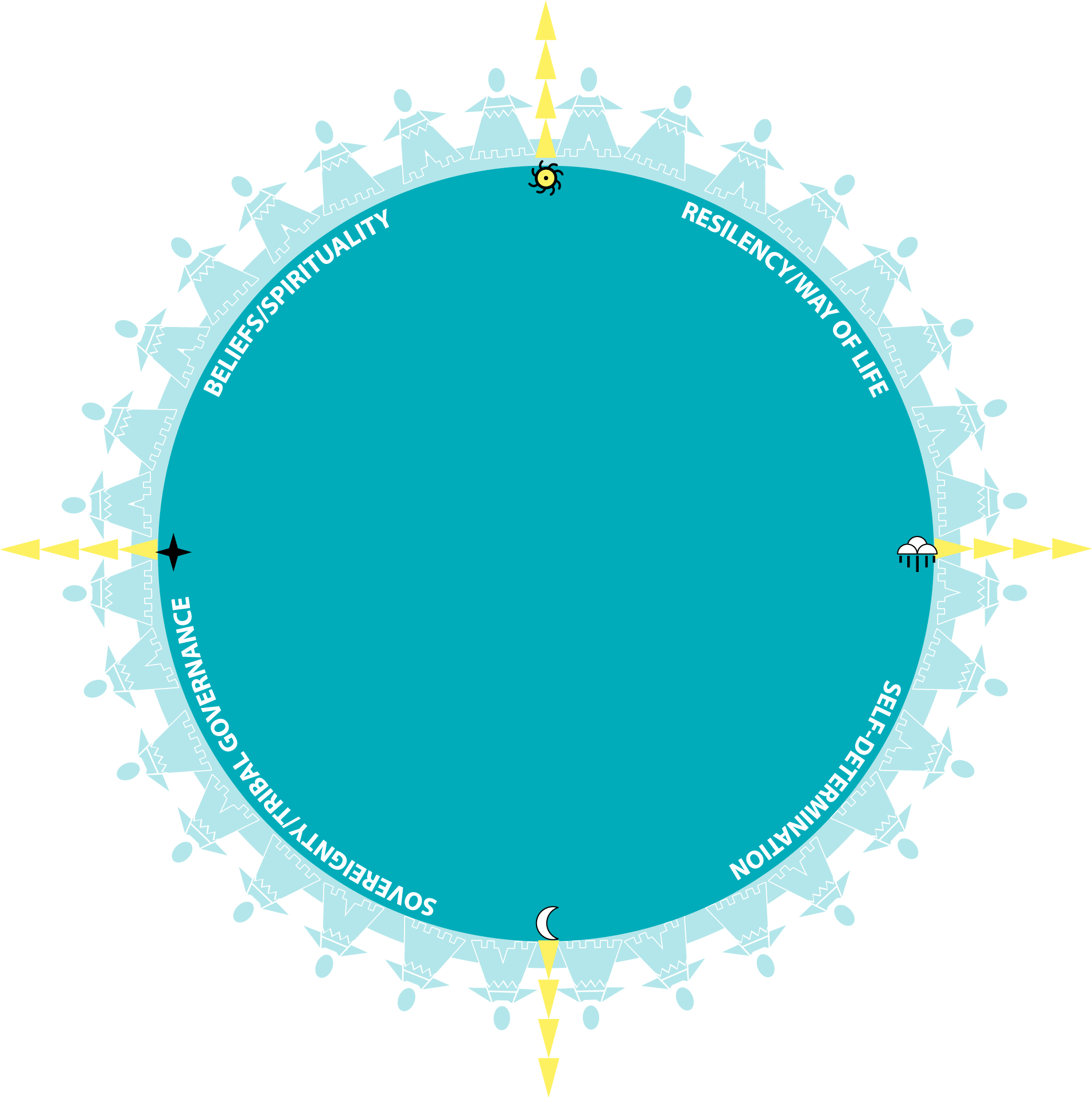
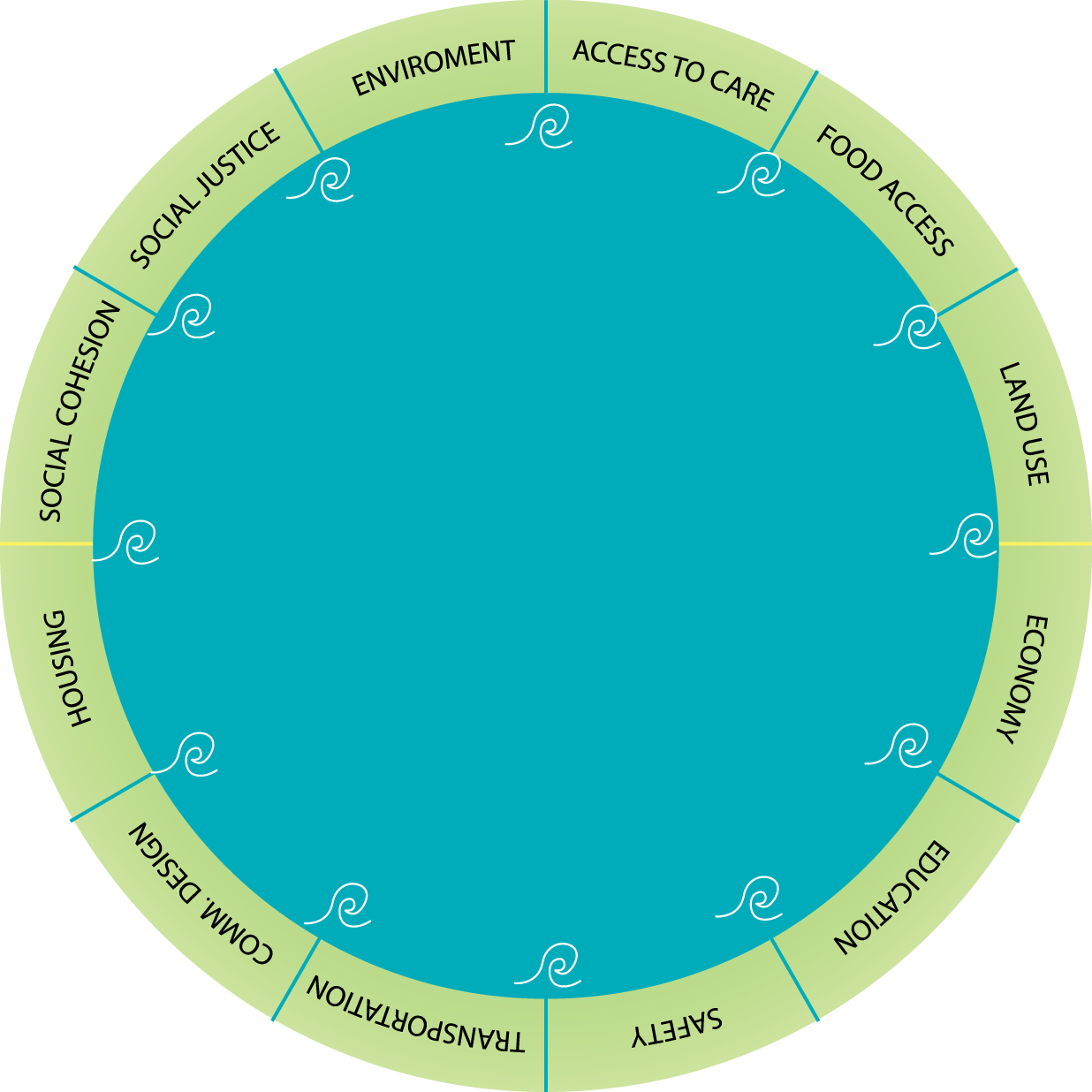
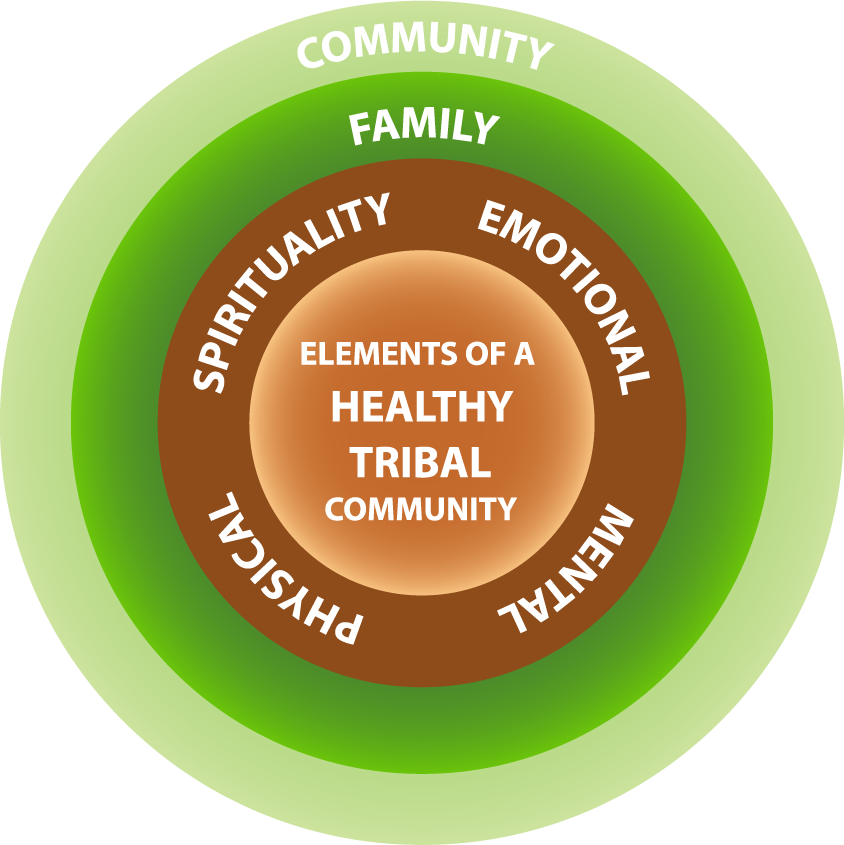
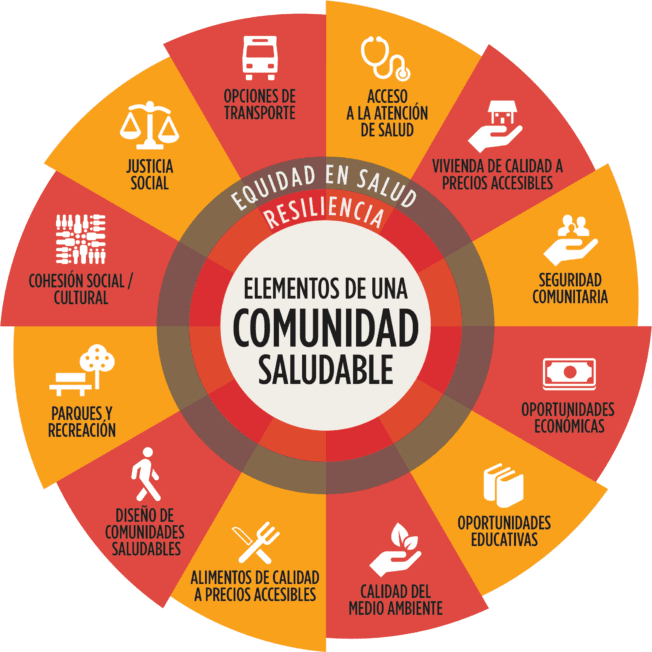
The Spanish Wheel
The Elements of a Healthy Community Wheel has been translated into Spanish. In an effort to better-serve our diverse community, we translated the Wheel. Our website is also now available in Spanish. Simply choose the preferred language from the drop-down on the top right of the screen. If organizations would like to speak about social determinants of health (SDOH) to communities in Spanish, the wheel can be a resource.